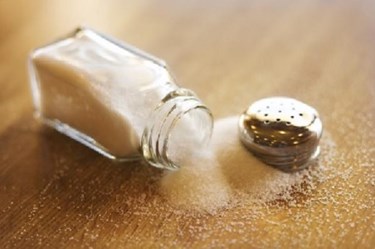Snack Food Processors Take On Sodium Alternatives
By Isaac Fletcher, contributing writer, Food Online

With an increasing number of American consumers looking to reduce their salt intake, low-sodium alternatives could provide opportunities for smaller brands to differentiate their products
Almost half of all Americans purchase salty snacks to be eaten throughout the day and 35 percent are eating more snacks and fewer regular meals. With this in mind, it is little wonder that the 2013 savory snack industry is estimated to be worth $21.8 billion, an increase of 3.3 percent from 2012, and sales continue to increase. A large slice of the U.S. snack business is held by PepsiCo, which owns 40 percent of the sector — a share that poses difficulties for the smaller, niche brands that are trying to stay relevant or break into the industry. New opportunities for sodium reduction could provide a solution for these smaller players to differentiate their product from the competition.
Product differentiation allows smaller brands to “connect directly with consumers who may be seeking unique snack offerings that are both healthy and authentic,” according to a January Mintel Group Report titled, Chips, Popcorn, Nuts, and Dips. Although the savory snack industry continues to grow, with potato chips racking up 34.8 percent of snack sales in 2013, many consumers want to cut back on unhealthy products and replace those snacks with more healthful options.
For this reason, nuts and trail mix sub-segments are the fastest growing of the snack category, with 53 percent growth from 2008 to 2013. Consumers view these snacks as having more nutritional value than potato chips and many have started to purchase these over other options. Potato chip manufacturers are well aware of the increased demand for more healthful foods, offering baked versions, shorter lists of ingredients, and healthier ingredients. With the recent awareness of the dangers of trans fats, potato chip companies have removed trans fats from their products, taking a step toward a healthier chip.
In the past, reducing sodium in a product came with a corresponding reduction in flavor, but with new sodium alternatives that may no longer be the case. FlakeSelect, Soda-Lo, and other similar sodium alternatives rely on the modification of crystal shape to deliver more salt flavor per volume of use. In the instance of FlakeSelect, sodium chloride and potassium chloride are combined by smashing the two together, resulting in a flake shape with a larger surface area than traditional salt. This means that more area comes in contact with the tongue per flake versus other shapes. Soda-Lo achieves a similar result through use of a more rounded shape.
With sodium alternatives, snack manufacturers may be able to take a bite out of chips’ share of snack revenue. By reducing sodium levels in their products, companies can deliver a healthier product to consumers, which may offer a competitive edge as consumers become ever more health conscientious. Chip makers stand to benefit as well from reduced sodium and new flavor combinations, which may still bar entry into the snack sector for other snacks and smaller brands. Regardless of what type of snack or which producer comes out on top, one thing is certain, consumers can expect tasty, healthier snacks as producers vie for supremacy.
